Scientific Facts
| Common Name: | French Lop |
| Scientific Name: | Oryctolagus cuniculus |
| Life Span: | 5 years |
| Size (Adult): | Large |
| Weight (Adult) | 4.5 to 6.8 kg |
| Habitat: | Domestic rabbits, human homes |
| Body Shape: | Compact |
| Country of Origin: | France |
Physical Description

The French Lop is a breed of rabbits that have been developed for domestic purposes. It was first seen in France in the 19th century due to the selective breeding of the Flemish Giant and the English Lop. This lovely rabbit breed looks like the English Lop but is heavier and does not have the large ear length of the English Lop.
The French Lop weighs around 4.5 kg or 9.9 pounds, quite a hefty weight for a cute bunny! Because of its size, it can live only five years. It is recognized by the American Rabbit Breeders Association or ARBA and the British Rabbit Council or BRC.
The French Lop is large, weighing 10 to 15 pounds. Some specimens may weigh heavier. These rabbits do not have the maximum weight in the show standard of the two rabbit associations. The ears of this French beauty are long and can measure from 5 to 6 inches long and can hang down just below the rabbit’s jaw. The body is stout, thickset, and has a large head. The legs are short and straight in front, while the hind legs are parallel to the body. It has a wonderfully dense, soft coat that is available in solid and broken varieties. In these categories, there are several color variations, such as black, fawn, chinchilla, and agouti.
Standards of the French Lop According to the ARBA
The French Lop is judged according to nine categories:
Body
The body of the French Lop should be thick, massive with well-developed muscles, and must have well-rounded full shoulders that seamlessly blend to the hindquarter, which has good depth and full.
Head
The head is slightly curved from the ear’s base to the nose. It must be strong, wide, and close on the shoulders and must have a prominent crown.
Ears
The ears should be lopped with a strong rise from the top of the head that looks like a horseshoe. The width and length must be balanced to the size of the body. The ears must hang 1.5 + inches below the jawline. The ears must be thick, well-furred, and rounded.
Feet and Legs
The feet and legs should be short, thick, and straight.
Bone
When it comes to French Lops, the heavier the Lop, the better it will be for the show.
Fur
The fur of the French Lop has a lovely rollback, is thick, dense, shiny, and is around 1 ¼ inches long.
Color and Markings
The colors recognized by the French Lop include a nose mark, which is the butterfly, with dark eye circles, dark-colored ears. In this breed, the blanket body pattern is more preferred than other markings. The legs must be white except when there are elbow spots because this is a desirable pattern. The eye color should match the Lop guide description.
Condition
The French Lop must be well-muscled and must have firm and tight flesh.
Show Points
Show Points is awarded for the French Lop with the most for type. This is followed by fur, color, and condition. The total must be 100 points.
Standards of the French Lop According to the BRC
When it comes to standards set by the BRC, there are also several categories that judges consider:
Ring Size
The BRC classifies the French Lop as Ring Size H.
Weight
Similar to the ARBA, the weight, according to the BRC, is limitless. The French Lop must be as large as possible but with a minimum senior weight of 10 pounds.
Type
The French Lop body must be firm, massive, short, broad, balanced, and must have defined muscles. There should be little to no visibility of the neck. The arch of the body rises to curve over the well-muscled form. It must also have a wide yet short rear. The chest is deep and broad, with the front legs short, thick, and straight. The cute tail should be straight and must be well-furred.
Head, Crown, Eye, and Ear
The head must be well-developed, must be wide, broad, and must have full cheeks. The crown must be visible on top of the head. The ears are thick, well-furred, well-rounded at the tips, and are broad. There must be no visibility of the inner ear, no matter where you face the rabbit. Compared to the ear standard in the ARBA, the BRC does not measure ear length. The eyes should be round and bright.
Coat
The luurious French Lop coat should have a good rollback, must be thick, should have no patches of fur, and must have a lot of guard hairs.
Condition
The French Lop’s condition should be healthy and firm when feeling with both hands.
Color
The BRC recognizes several colors and color combinations of the French Lop, namely white, black, blue, agouti, chinchilla, opal, Siamese Sable, Sooty-Fawn, or Madagascar or Tortoiseshell, fawn, orange, butterfly, and steel.
Show Points
Show Points are awarded to type, and this is followed by the head/crown/ear, coat, color, and finally, the condition of the specimen. The combined points are 100 points.
Coat and Colors
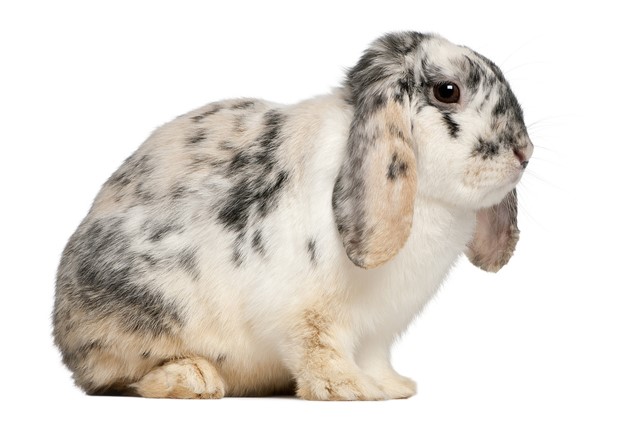
The cute French Lop is a burst of colors. You’ll surely find a Lop that wears your favorite color or shade of color. The BRC and the ARBA have recognized several colors, including white, black, blue, agouti, chinchilla, opal, Siamese Sable, Sooty-Fawn, or Madagascar or Tortoiseshell, fawn, orange, butterfly and finally steel.
According to people who have French Lops as pets agree that there are favorite Lop colors. The most popular are black, white, agouti, fawn, and steel. When it comes to the winningest French Lop color, the chinchilla and the butterfly are the most favored. When asked which is the cutest color among the mentioned colors, the white stands out.
Fast Facts
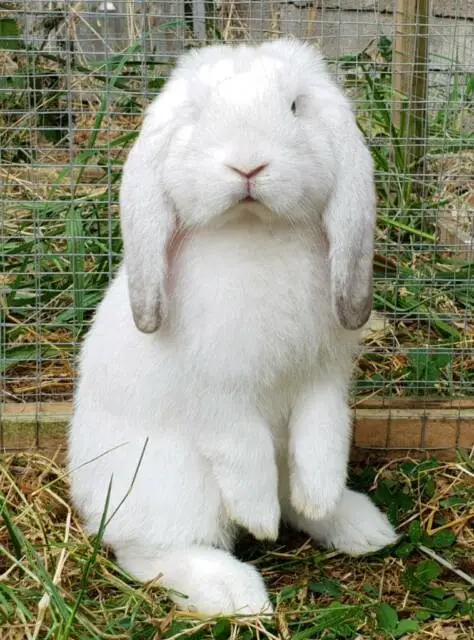
The French Lop is one of the most affectionate rabbit breeds. Those who have French Lops say that it did not take them too long to gain the trust of their pets, and also their pets are sweet, charming, and very affectionate. It is common for children to choose the French Lop over all other breeds because of its resemblance to a stuffed toy. The cute nose, lovely eyes, and floppy ears make it a very lovable and sweet pet that anyone will love.
History of the Breed

Would you believe that this charming breed was first developed as food? It was bred as meat around 1850 in France. Experts think that the French Lop was created by combining the genes of the English Lop and the Giant Papillon.
Soon after it was introduced, the French Lop became popular in countries surrounding France, such as the Netherlands. Ten specimens of the French Lop were exported to the UK in 1933 for the exhibition.
By 1960, this lovable breed has become a mainstream rabbit breed in the UK, and afterward, the first French Lops were taken to the United States in 1971. The French Lop has established itself as a popular breed not just in Europe but also in North America. This is why it duly recognized as a rabbit breed by the American Rabbit Breeders Association second only to the British Rabbit Council.
While the French Lop excelled in many shows and exhibits, it’s following among common rabbit lovers flourished as well. It has become a very popular pet among families, seniors, and also among single people. The lovable appearance and kind temperament of this rabbit have been praised all over the world.
Today, this breed is very much recognized, and it may no longer be bred for food but for show and as a lovable pet and part of the family.
Temperament and Behavior
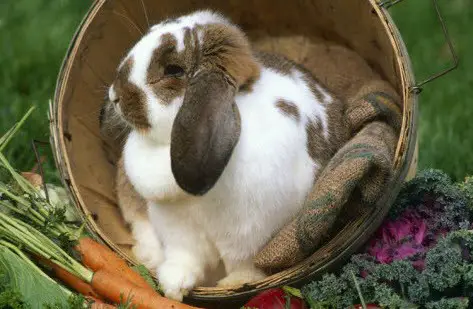
The French Lop is a giant with a kind and peaceful demeanor. But because of their large size, it may need a large cage or enclosure where it can play, move around and sleep. It loves the outdoors, so you may want to consider building an enclosure outdoors instead of keeping it lonely indoors.
This breed tends to chew on anything that it will see. It can chew on your furniture and even on wooden fixtures of your home. It’s always best to rabbit-proof its surroundings whether you have its tank indoors or outdoors. For instance, if you want to keep your rabbit indoors, block out areas in your home where it can cause trouble or use a pet enclosure or removable gate to keep it in a certain area. Outdoors is a different thing; you must use a very durable cage or enclosure to accommodate a large French Lop. Be wary of predators because even with its size, it is still prey to larger mammals and birds of prey.
The French Lop is a relaxed breed, very placid, and has a relaxed temperament. You can house this rabbit with other rabbit species as well as another French Lop. It won’t mind the company since this is a very social rabbit breed.
When you socialize this at a young age, this can become a friendly, happy, and healthy family pet. The French Lop is gentle even with young children; you’ll find them the subject of affection and will tolerate pretending play like dress-up, tea parties, and so on. But despite its docile temperament, remember that this rabbit is huge, and a small child may not be able to lift it or hold it. A responsible adult or caretaker must still be present to assist a child as he plays with the friendly French Lop.
The French Lop will not hesitate to use its hind legs to kick anyone or anything that it perceives as a threat. So remember to take extra care, especially if you are new to handling an adult French Lop.
Comparable Breeds
There are two comparable breeds with the French Lop, and these are its parents, the English Lop and the Flemish Giant rabbits. The English Lop has an almost similar appearance with the French Lop, but the latter is heavier and has a shorter ear length. Meanwhile, the Flemish Giant is a giant ancient rabbit breed that is known for its heavy, muscled form and stance. It is considered one of the heaviest and the strongest breed, and it has transferred this huge form to the lovable French Lop.
Fun Facts
Do you know that after decades of being recognized as a meat rabbit, the French Lop is finally getting a facelift? It is now replacing the dog in many homes. It is as large as a medium-sized dog, and some breeders and owners say that they can train the French Lop to follow some commands like a dog as well.
You may have seen pet owners who place collars and leashes on their French Lop rabbits. You may have also seen owners that use dog furniture like feeding bottles and water dishes on French Lops, which is not surprising since this is indeed a very lovable rabbit breed.
Care
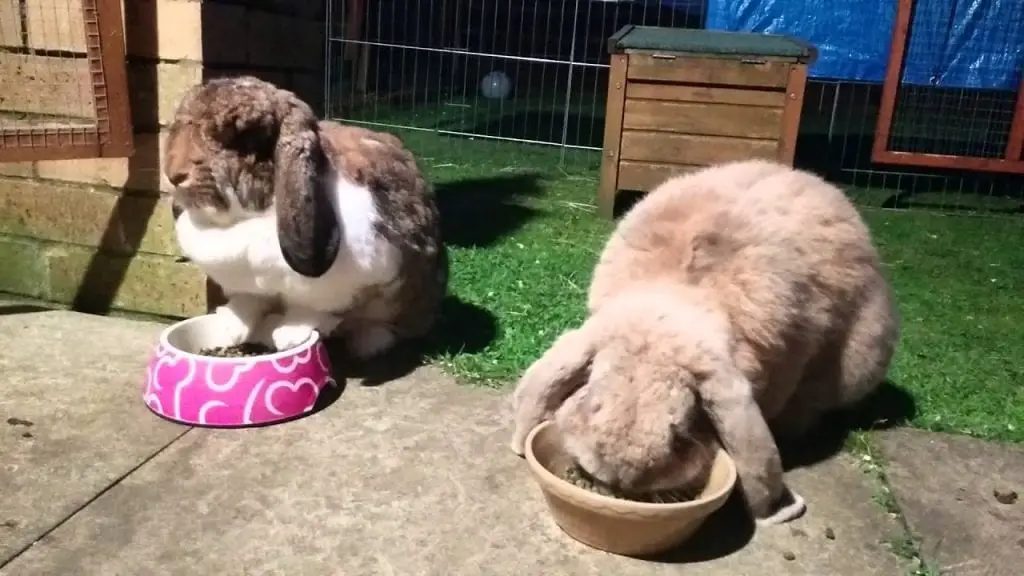
French Lop rabbits are domesticated rabbits but will still need the same care as with other rabbit breeds. This means you must give your pet the right diet, companionship, and housing throughout its short life. The main food of rabbits is hay and should be the main bulk of their diets.
You may also offer rabbit pellets because this adds the needed vitamins and minerals for growing healthy bodies. Vegetables and fruit should also be included. But make sure to offer only organic food which is free from pesticides and other chemicals which can harm your pet.
And when it comes to rabbit care, make sure that your pet has access to unlimited fresh water and hay as much as they want. Hay is helpful in keeping their digestive tract healthy and regular. A quality pellet is needed to provide the right nutrients, but water and hay should never be overlooked.
French Lops are perfect pets for both children and adults. Although some recognize this breed as a designer rabbit breed, many say that it an easy, patient, and worthwhile pet. As an owner, you must watch your rabbits closely for any possible signs of illness.
You must also interact with your pets every day. An owner who spends time with their pet rabbit is loved by their pets rather than placing these inside their cages and ignoring them. Most rabbits thrive long and healthy lives because their owners interact with them.
Spaying or Neutering
Spaying and neutering should be done while your rabbits are still young. However, most vets wait until their pets reach six months of age to observe the safest practice on spaying. Also, bucks are neutered at a young age to prevent aggression mostly as young as three months; they are naturally unaggressive. This means that neutering bucks may not be really needed at all.
Supplies and Cages
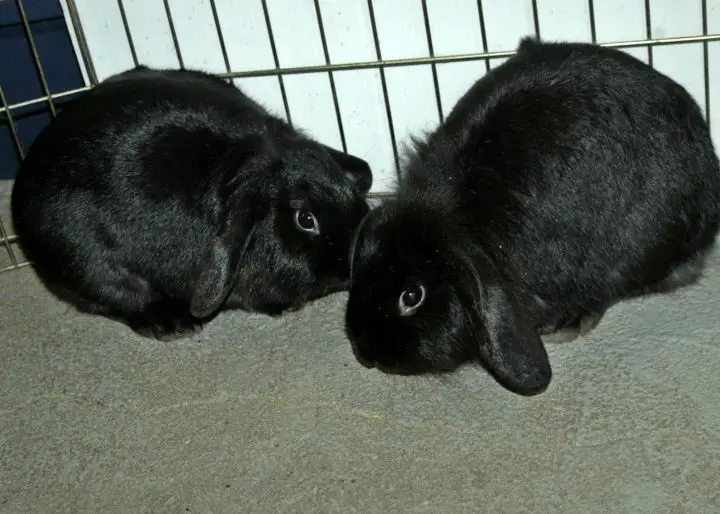
Housing your French Lops should be easy since these are small rabbits after all. Use a wire enclosure with a removable plastic bottom. The bottom should have soft bedding or a liner that will keep your rabbit comfortable.
Since French Lops are very small, there is no need to prepare a bigger enclosure. You can secure rabbit hay feeders and attach these to the side of the enclosure to allow your rabbit to pull hay out and chew when they feel hungry or bored.
For bedding, you may use aspen or wood pellets. You may also use pelleted horse bedding. The cage may be cleaned with a cage cleaner or natural products like white vinegar or baking soda. Avoid using bathroom cleaner or ordinary cleaning products because these can be toxic for your pets.
Do daily spot cleaning of their bedding and replace this every week. This helps in getting rid of droppings, urine, and other dirt, which is essential in keeping both the rabbit and it’s home, clean, and fresh smelling.
Rabbits are known to be very clean animals. They will groom themselves, and even other rabbits inside the same enclosure. You may find your rabbit licking and picking at its fur for extended hours just to make sure every bit is clean.
They are crepuscular, which means that they are active in daytime and evening. Their feedings should be done in the evening. They sleep for 8 hours on average but may also sleep longer when the temperature drops.
Rabbits are born without fur with their eyes closed, so it’s important to secure a warm, safe environment when these are born. Rabbits love living in groups, which means you may want to take care of not just one French Lop. You may want to consider taking care of a big group of French Lops if you have enough space in your home.
Indoor vs. Outdoor Cage
Speaking of space, you can also decide whether to place the cage of your rabbits indoors or outdoors. Consider the following pros and cons of indoor and outdoor caging. Rabbits that have their cages indoors usually have longer lives and are more social and happier. Meanwhile, rabbits that live outdoors are skittish and may not be too happy about human interaction unless you interact with them daily. These rabbits are also vulnerable to weather changes, temperature, mites, predators, fleas, and other complications.
If you want to keep your rabbits inside, but do not have enough space, you may use an outdoor cage. Your pets can use this to play and run around. On the other hand, outdoor cages are the easiest to maintain. Just scrub with a brush and hose down the dirt, and you’re done.
Outdoor cages also give your rabbits more room for playing and running around. Take note that the cage should be kept away from direct sunlight, and should be placed in moisture-free areas. The cage should be well protected against predators such as other household pets like dogs and cats.
Health Problems
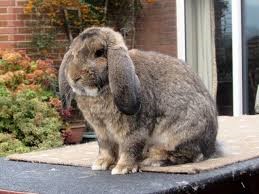
French Lops are prone to all common types of rabbit diseases but don’t have a specific illness that’s common with the breed. With this in mind, check for possible signs of illnesses. Your pets should also receive standard vaccinations from the time that they are just a few weeks old.
French Lops have sensitive digestive systems; therefore, you must be careful as to what type of food to feed them. As such, baby rabbits for enteritis, bloat, and gut stasis, most especially if these are just less than a few weeks old. Also, be wary of ear or fur mites, fleas, and ticks. This can be prevented by providing good hygiene, husbandry, and regular pet management.
Some ill-health signs to watch out for are lack of appetite, nasal and eye discharge, diarrhea, vomiting, unsteady gait, restlessness, growling (a sign of pain), lack of energy, and bloating. If you notice any of these symptoms, take your pet to the vet at once.
Because of their size, it is natural to feed this huge breed more during the day, but remember, feeding more calories can lead to obesity and illnesses related to being overweight. So as much as possible, control your feeding and add more veggies and fruits to its diet.
Encourage your pet to exercise. Because of its weight and size, the French Lop may lose interest in any physical activity and may just settle with sleeping or napping around. To encourage it to walk, play or exercise, chase after it. You can use toys like feathers, flags, and brushes to get them to walk and run. If all else fails, use a remote-controlled toy car and let the rabbit chase after it. Place food in the toy car and let it chase after food.
Is your French Lop overweight? Consult your doctor if you think that your French Lop is overweight. Your doctor can measure its weight correctly and will help you create a better diet plan and exercise regimen for pet rabbits. And if you suspect any health condition due to its size and weight, consult your vet at once to get appropriate treatment.
Teeth
An important part of taking care of French Lops includes regular checkups of their teeth. This makes sure that their teeth do not grow too long. This is the reason why rabbits tend to chew so much, which is to naturally shave off their teeth.
If their teeth grow too long, these can grow right through the rabbit’s mouth and jaws. This could become very painful for the rabbit. With this in mind, a diet high in hay is recommended as it files down teeth naturally as the rabbit chews. Ensure that the rabbit has ample amounts of hay inside its cage and enough water as well.
Grooming
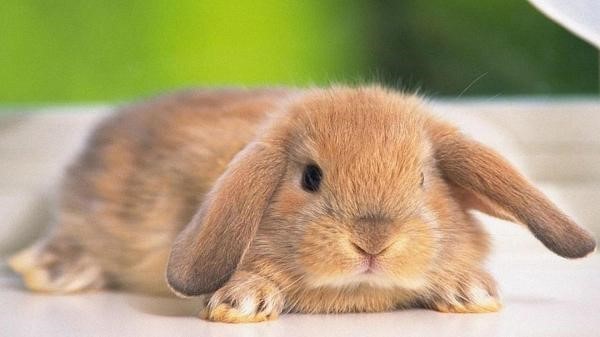
French Lops have dainty fur and may need regular grooming, at least once or twice a week. You may do it more when they are molting to prevent wool blocks, where the rabbits may ingest fur. Rabbits engage in self-grooming, and usually, they ingest their fur but can’t expel these like cats. When the fur accumulates inside their digestive system, this can cause a blockage.
Don’t give your rabbits a bath because this stresses them. You may simply spot clean a dirty French Lop by using a damp towel. Rub them with a dry and clean towel afterward. You must also trim their nails every month using nail clippers, or you can take this to the vet to have them do it for you. Check for overgrowth teeth, as well. Also, consider that their cages should also be spacious enough to allow them to hop, play, and socialize with other rabbits.
Can you blow-dry your lovely French Lops? Some breeders say that it is a frightening thing for rabbits to feel a hot blow dryer, but some say that their French Lops actually enjoy this activity. Because of the French Lop’s very timid nature, it won’t mind being placed on a grooming table, brushed, cut, and blow-dried, especially when its fur is wet. But before you do this at home, allow your pet to get used to the loud sound first. Power on the blow dryer and just let it sit next to it. Use the dryer for a few minutes only, and afterward, provide a treat to your pet.
Breeding
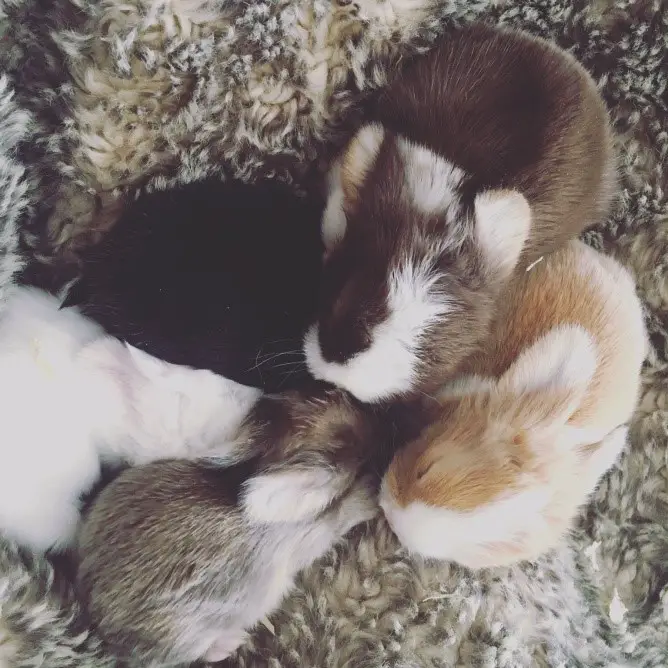
You should wait until your French Lops are at least 6 months before they start breeding. The bucks can be younger, but it is often best to wait until 6 months to be sure that they are ready to mate. Also, for male rabbits, make sure that their testicles have dropped because this means that they are mature enough for breeding.
The gestation period of a rabbit is 28 to 33 days, but most of the does deliver at 30-31 days. So before starting to breed, select a date that you want for the females to give birth. This will make sure that you can be at home to provide the mother with her birthing box. You must plan ahead to ensure that you will be there for two months when the babies need to be properly cared for by their mother to avoid any issues before they are weaned.
Rabbits are able to conceive and give birth at any time of the year, so scheduling the birth is easy. Consider that it is going to be uncomfortable for the mother to give birth during the hot summer months. It is also dangerous for babies to be born in the wintertime because it is too cold as they are born hairless. If the mother is not properly cared for, her babies can die. You should choose spring and autumn for a doe to get pregnant.
Other Notes
French Lops are just like regular rabbits because they can’t help chewing on things. They will even chew on wooden furniture, wooden parts of your house, and even through electrical wiring if available. So, to avoid these mishaps, give your pet hay or chew toys aside from their food. It’s also important to rabbit-proof your home and yard if you plan to let your rabbits roam around.
Make sure that everything that goes to their mouths is free from herbicides or pesticides. Younger French Lops need alfalfa hay for calcium, needed for growing bones. Meanwhile, adult Lops will do well with love, legume hay. Be careful about giving just any kind of yard clippings to your Lops and feed only organic fruits and veggies.
These rabbits should be kept in pairs for companionship. It has been observed that being with another rabbit will make a rabbit happier and may contribute to a longer and healthier life. Take note that in the wild, these rabbits are very social, so you must mimic this behavior by allowing your pet to live with other rabbits.
French Lops need a large space to roam around and play, so invest in a large and durable cage whether you’re keeping your pet indoors or outdoors. A large metal cage is a good idea since it is durable for the French Lop’s size and strength.
Finally, de-worming is also important for French Lops. It should be completed in the spring and fall. Consult your vet about the ideal de-worming product for your pet rabbit. Some use de-worming pastes, which can be placed inside the mouth of your pet. It will readily eat it afterward.
Organizations and Clubs
Because of the popularity of the French Lop breed, several organizations and clubs composed of French Lop lovers have been created. Also, the French Lop is recognized by two of the most important rabbit associations on the planet, namely the British Rabbit Council or the BRC and the American Rabbit Breeders Association or ARBA.
Availability – Where to Get One?

When it comes to the cost of buying a French Lop, consider a breeder or a regular retailer online or locally. Price may depend on whether you are getting one for a show, or a rabbit for a pet as show rabbits tend to be very expensive.
Looking for a reliable breeder is essential for a healthy rabbit. This will also make sure that you are getting a healthy rabbit and not one with genetic disorders like hooked spines or malocclusion. Reliable breeders usually breed these traits selectively, so you won’t have to worry about these. And if you want your Lop to be a champion breed, you must get a purebred variety with no genetic disorders.
Consider the cost of owning a French Lop compared to other rabbit breeds. Because of this rabbit’s size, it needs to be fed more than a regular pet rabbit, and thus you need to spend more on rabbit food. You need a larger rabbit enclosure, so the cost of building one is another thing to consider. Finally, vet bills are costlier because of the rabbit’s size, and grooming may also be more expensive.
How to Care for a French Lop
French Lop rabbits are domesticated rabbits and are easy to care for if you are willing to spend time and have a lot of patience. You must give your pet the right diet, companionship, and housing to ensure good health and a well-rounded disposition.
The main food of rabbits is hay, but you may also offer rabbit pellets because this adds the needed vitamins and minerals for growing healthy rabbits. Vegetables and fruit may be included in your pet’s daily diet, but make sure to offer only organic food which is free from pesticides and other chemicals. Toxins and chemicals can harm your pet and cause terrible health complications.
Make sure that your pet has access to unlimited fresh water and hay. Change the water inside the dish twice a day. Hay is important in keeping their digestive tract healthy and regular, so they must have all the hay they want to eat daily.
French Lops are the best pets for both children and adults because these are lovable and docile creatures. Although recognized as a designer rabbit breed, many say that it an easy, patient, and worthwhile pet to own. As an owner, check your rabbits closely for any possible signs of illness or health problems.
You must interact with your pets daily. An owner who spends time with their pet rabbit can guarantee a happy, well-rounded, and healthy pet for the rest of its short life. Most rabbits that receive constant attention from their owners develop trust towards their owners. These rabbits are less skittish, are more relaxed, and this contributes to their overall physical and mental health.
FAQs
What do French Lops eat?
French Lops will eat almost anything, but it prefers to eat plants and will not eat meat. The best diet has to have hay to keep its digestion healthy and its teeth trimmed, but you can also give it vegetables and fruits provided these are organic fruits and veggies.
How much food can a French Lop eat daily?
A French Lop has a large build; therefore, it needs more food daily. You must feed your pet twice daily but offer fresh hay inside their cages. Water should also be in a bowl, and this must be fresh and changed twice a day, as well.
Do French Lops drink more water?
Yes, because of the French Lop’s size, it also needs more water than a regular rabbit. Also, place water and food in a large dish, preferably a doggie bowl with a heavy bottom to prevent from spilling as the French Lop eats and drinks.
How do you prepare food for the French Lop?
Cut the fruits and vegetables into smaller pieces. Cut leafy greens and other veggies into smaller pieces as well. Rabbits can’t hold their food and will just use their sharp teeth to hold food and nibble on them. Meanwhile, commercially-prepared pellet food is small enough for any rabbit, and you don’t need to prepare this; just pour the right amount in the bowl and feed it to your rabbit.
What are the French Lops’ favorite foods?
French Lops will love any kind of fresh food and veggies. Yes, carrots are a treat, but make sure to cut these into small pieces so the rabbit won’t have a hard time biting and nibbling.
Can you feed French Lops meat?
No, French Lops are herbivores and thus will not eat meat. Feed it only hay, fruits, veggies, seeds, grass, and commercially-prepared rabbit pellets or pet food.
Will the French Lop eat human food?
It will eat fruits and vegetables that humans eat, but make sure that these are organic produce because these don’t contain chemicals or pesticides that can affect your rabbit’s health.
How to tell if your French Lop is obese?
If the weight of your French Lop is more than the average weight, then your pet may be obese. The best way to find out if it is overweight and to prevent this from happening is to take this to a vet where it can be evaluated based on standard rabbit measurements.
Why is there no weight limit for French Lops show rabbits?
There is no weight limit for showing French Lops because this breed was bred for their size and meat. In a rabbit show featuring French Lops, you’ll find specimens with impressive sizes and weights.
How tasty is the meat of French Lops?
Those who have tasted the meat of French Lops say that it is tender, fatty and goes well with wine. If you want to taste the best French Lops recipe, check out French cuisine restaurants that serve this delicious food.
Where do you place the French Lop cage?
You may choose from an indoor or outdoor space to place your pet’s cage and consider the pros and cons. Indoor cages will allow you to keep watch and will secure your pet from the elements, but most indoor enclosures are small. Meanwhile, outdoor cages are susceptible to the elements and predators but are large for your pet to roam around, play, and socialize.
Can French Lop sleep in the dark?
French Lops can sleep in the dark and the light; they don’t mind if you turn off the lights. French Lops will sleep near each other, huddled close and with their eyes closed and their heads down
Are French Lops active at nighttime?
Some French Lops are active even at night, while some may sleep through. So as with all pets, monitor your pet French Lops closely and find out when it’s best to eat and when is the best time to sleep or rest.
When is the best time to feed French Lops?
This may depend on your pet. Some French Lops are active in the daytime while some prefer to sleep during the day.
Can you place French Lops in a cage with other pet rabbits?
Yes, French Lops may be housed together with other pets inside an enclosure. It is sociable and will love being with other rabbits and doing things together.
How do you pick up a French Lop rabbit from the ground?
The French Lop is large, and therefore you must be very careful not to drop it. Pick it up by holding on to its belly with your two hands. Pick it up only a few inches from the ground.
How heavy can a French Lop rabbit get?
A French Lop can grow as much as 6.8 kg, and some breeders say they have larger species bred in captivity.
Can a French Lop rabbit eat from your hand?
Yes, French Lops are timid and easy to tame and will readily eat from your hand. It will love treats and can learn new tricks by using treats.
Will a French Lop eat hay?
A French Lop will eat hay, and this can be a staple food in their diets. French Lops need hay to keep their digestive system regular and healthy and will keep their teeth trimmed to prevent overgrowth.
How much hay will a French Lops eat in a day?
French Lops will eat as much hay as it wants, so make sure to provide fresh water daily inside its enclosure.
Will a French Lops bite you?
Yes, a French Lop can bite if it feels threatened. But with domesticated French Lops, these won’t bite and are often very timid and won’t show an ounce of aggression.
Will a French Lops kick?
Yes, French Lops has large hind feet that it can use to kick its opponent. The large hind legs also keep it steady and balanced despite its huge weight.
Will a French Lop tolerate children?
Yes, French Lops will tolerate young children and may play with them as well.
Is this a good first-time rabbit pet?
No, this is not a good first-time rabbit pet because of its size. Although it has a sweet and kind demeanor, its size makes it harder to care for.
Is a French Lop territorial?
No, French Lops are not territorial and will tolerate being inside cages with rabbits and even other pets.
Is a French Lop rabbit aggressive towards other pets?
No, French Lops are not aggressive in any way and will not show any aggression towards other rabbits inside a shared enclosure or aggression towards other animals.
Can you leave a French Lop rabbit alone outdoors?
Yes, you can leave your pet French Lop outdoors, but you must still keep a close watch for predators.
Is a French Lop rabbit sociable?
Yes, a French Lop is sociable like most rabbit breeds.
Do French Lops mate for life?
No, French Lops don’t mate for life and can have different partners in one breeding season.
How do you handle a French Lop rabbit?
To handle a French Lops, hold it like you would a dog by wrapping your arms around its body and then slowly picking it from the ground.
What is the best kind of bedding that’s best for French Lops?
Aspen and cedar are the best bedding because these will absorb odor and moisture better and will be easy to clean.
How do you clean the cage of a French Lop rabbit?
Clean by removing all the debris and feces. Replace the bedding and clean the food and water dishes. Finally, brush the cage bars with a good natural or chemical cleaner, follow instructions on how to clean the rabbit cage.
What is the best natural cleaner to clean a French Lops cage?
You can choose from lemon, baking soda, and white vinegar. These will clean the cage efficiently and will also remove odor.
What are safe toys to play with your French Lops?
You can give your French Lops a cardboard toy or a moving toy so it can move and exercise.
How do you train your French Lops where to poop and pee?
After eating, take it to the area where it’s supposed to pee or poop and left it alone for a while. When it’s done, release it back to the enclosure. Do this regularly, and soon it will remember where it needs to be after eating.
Can a French Lop be trained to walk on a leash and collar?
Yes, French Lops can walk with a collar and leash and will like it. Train by introducing the collar first and then giving it a treat when it is relaxed.
Can you use a clicker on your French Lops?
Some breeders say that a clicker works, and they can introduce even more complicated tricks with the clicker.
Can you keep a French Lops as a pet in your area?
If you’re in doubt about keeping a French Lop as pets, consult your local animal care office or your vet.

